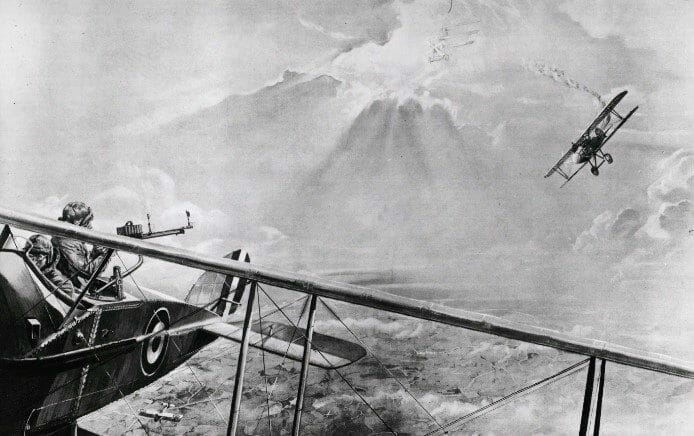‘It ain’t the guns nor armament
Nor funds that they can pay,
But the close co-operation
That makes them win the day.
It ain’t the individual,
Nor the Army as a whole,
But the everlasting teamwork
Of every bloomin’ soul.’
I was excited to stumble across this striking poem by Rudyard Kipling in Gale Artemis: Primary Sources while looking for material to mark the 100th anniversary of the Battle of the Somme. In just forty words, Kipling captures the essence of togetherness in overcoming the enemy in war. His words would have been especially pertinent for those who fought in the Battle of the Somme, an eighteen-week conflict requiring unprecedented teamwork, resilience, and determination. Remembered by many as epitomising the bloody stalemate of the First World War, there is a widespread popular belief that few battles achieved so little, at the cost of so many lives, as that of the Somme. Beginning on 1 July 1916, the Somme offensive was an Allied attack – although the majority of the troops were British – against the Germans, pitched along a 30 kilometre front. Preceded by heavy artillery bombardment, the aim was to make a decisive breakthrough while German forces were stretched at Verdun. For various much-debated and oft-repeated reasons though, the bombardment failed, and a stalemate gradually set in.
Paging through Gale’s rich array of sources, I couldn’t help but notice the recurrence of weaponry and technology in Somme-themed documents. A relatively recent report from Smithsonian Collections Online, entitled ‘Embattled Skies: the Emergence of Air Power in WW1’, criticised the tactical use of aircraft at battles such as the Somme. The British RAF’s B.E.2c model was, for example, intended principally as a base for ‘observation and reconnaissance’. Yet it ended up performing a range of other tasks, such as artillery spotting and tactical bombing.


Perhaps more significant in dictating the outcome of the Somme though was the use of guns. A second report drew attention to the ‘8-inch howitzers’, which were heavily used by the British as part of their advanced artillery bombardment in the prelude to the battle. As the report explained, extended gun usage only served to cut up large swathes of ground which infantry then had to traverse. To make matters worse, the shells were notoriously unreliable, leaving many unexploded. Bearing in mind the terrible weather conditions which set in during the course of the battle, with heavy rainfall churning the shell-pocked ground into a thick brown sludge, the difficulty each side had in making a breakthrough becomes clearer.

Perhaps this is why the Allies turned to another form of emerging technology in an attempt to overpower the Germans: the tank. Making its battlefield debut at the Somme in September 1916, the tank was a major player in the field of technology. Somewhat unexpectedly, it was a newspaper article of 1919 that proved most revealing. The Illustrated London News published a full-page replica of a tank design submitted by an Australian inventor to the War Office in 1912, which was controversially rejected in favour of the 1916 ‘Mark I’ model. The article claims that even the ‘authorities’ admitted the better suitability of the 1912 model to the Somme conflict; its curved chain track could potentially have navigated through the mud-ridden quagmire of the battlefield more easily.

Revisiting the Somme through the lens of weaponry has shed some light on why the battle became synonymous with stalemate and attrition. The ill-suited B.E.2c plane, unreliable shells, and rudimentary tank may all have contributed in one way or another to making the Somme a prolonged battle. Based on the interpretations of these few sources, it appears fairly safe to side with Kipling’s observation; neither guns nor armament won the day at the Somme. During the long months of attrition warfare, the importance of ‘everlasting teamwork’ must have been even greater.


